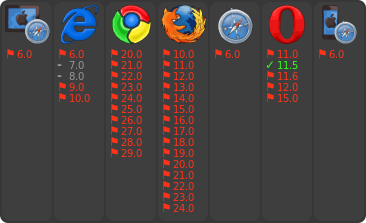Ease of Use
- text-table:
text-table is very easy to use, making it a great choice for developers looking for a quick solution to display tabular data without any frills.
- table:
table is extremely user-friendly, focusing on providing a clean interface for rendering tables. It is ideal for quick implementations where ease of use is a priority.
- cli-table:
cli-table offers a more comprehensive API but may require a bit more understanding to utilize its full potential. However, once familiar, developers can create complex tables with ease.
- table-layout:
table-layout may require a deeper understanding of layout management, as it emphasizes control over table dimensions. Users should be comfortable with specifying layout properties to get the best results.
- ascii-table:
ascii-table is designed for simplicity, allowing developers to create tables with minimal setup. Its API is straightforward, making it easy to integrate into projects without a steep learning curve.
Customization
- text-table:
text-table has minimal customization capabilities, focusing on delivering a simple text output. It is best for straightforward use cases where advanced styling is not necessary.
- table:
table provides basic customization options but is not as extensive as cli-table. It allows for some styling but is primarily focused on simplicity.
- cli-table:
cli-table shines in customization, allowing developers to define styles, colors, and even row and column spans. This flexibility makes it suitable for applications requiring tailored table appearances.
- table-layout:
table-layout allows for detailed customization of table dimensions and layouts, making it ideal for applications that need precise control over how data is presented.
- ascii-table:
ascii-table offers limited customization options, focusing mainly on basic ASCII formatting. It is great for standard outputs but may not fit all styling needs.
Performance
- text-table:
text-table is very performant for simple tables, as it focuses on delivering quick outputs without complex processing. It is ideal for applications needing fast and efficient table rendering.
- table:
table is designed for performance with minimal overhead, making it a good choice for applications that need to render tables quickly without sacrificing readability.
- cli-table:
cli-table can handle larger datasets effectively, but performance may vary based on the complexity of the table. It is generally efficient but may require optimization for very large tables.
- table-layout:
table-layout may introduce some performance overhead due to its focus on layout management. It is best used when precise control is necessary, but users should be aware of potential performance impacts.
- ascii-table:
ascii-table is lightweight and performs well for small to medium-sized tables. It is optimized for speed, making it suitable for applications that require quick console outputs.
Output Format
- text-table:
text-table generates plain text tables, making it suitable for environments where minimal formatting is required. It is a good choice for basic data presentation.
- table:
table outputs basic text tables, focusing on clarity and simplicity. It is ideal for applications that prioritize straightforward data presentation without additional styling.
- cli-table:
cli-table supports colored and styled outputs, enhancing the visual appeal of console applications. It is great for applications that require a more engaging user interface.
- table-layout:
table-layout focuses on structured output, allowing for precise control over how data is displayed. It is useful for applications that need specific formatting rules.
- ascii-table:
ascii-table outputs tables in pure ASCII format, making it suitable for environments where graphical representation is not possible. It is perfect for simple console applications.
Community and Support
- text-table:
text-table has a small but supportive community, making it easier to find basic help and examples. Its simplicity often means that users can quickly get up to speed without extensive resources.
- table:
table has a moderate community presence, providing some resources for support. It is not as widely adopted as cli-table but still has a dedicated user base.
- cli-table:
cli-table has a larger community and more resources available, making it easier to find help and examples online. It is well-documented and widely used in the Node.js ecosystem.
- table-layout:
table-layout has a niche audience, which may limit community support. Users may need to rely more on documentation and personal experimentation for troubleshooting.
- ascii-table:
ascii-table has a smaller community, which may result in limited support and fewer resources for troubleshooting. However, its simplicity often means less need for extensive support.

